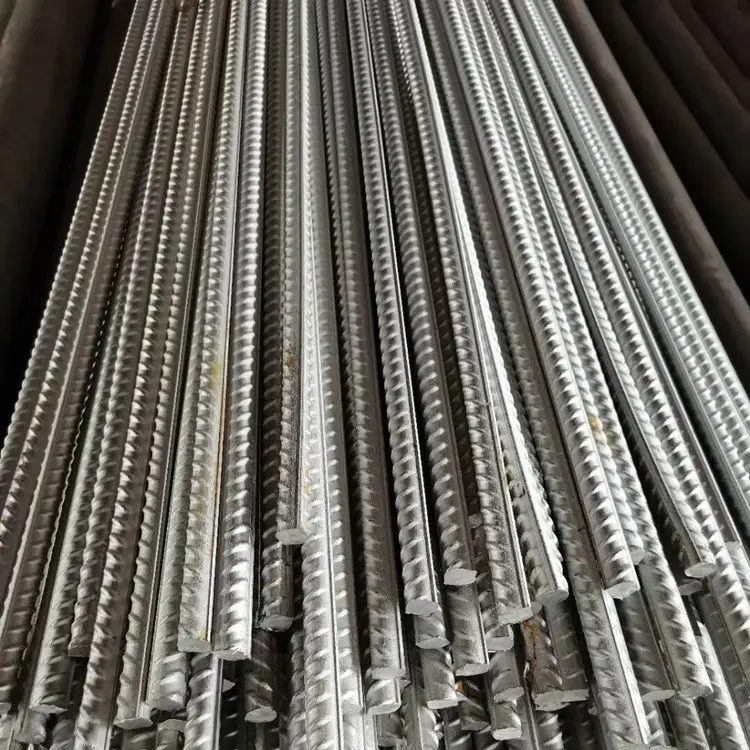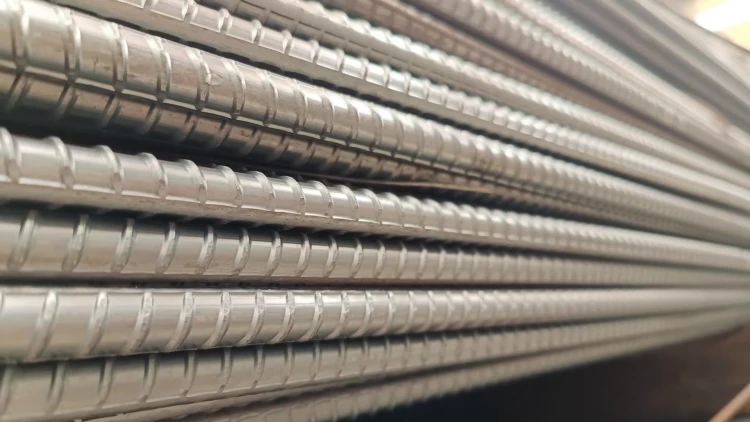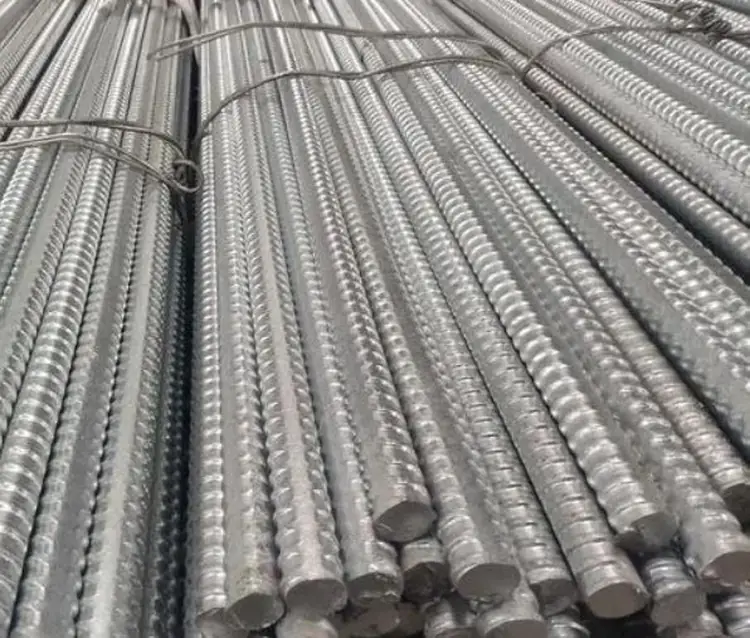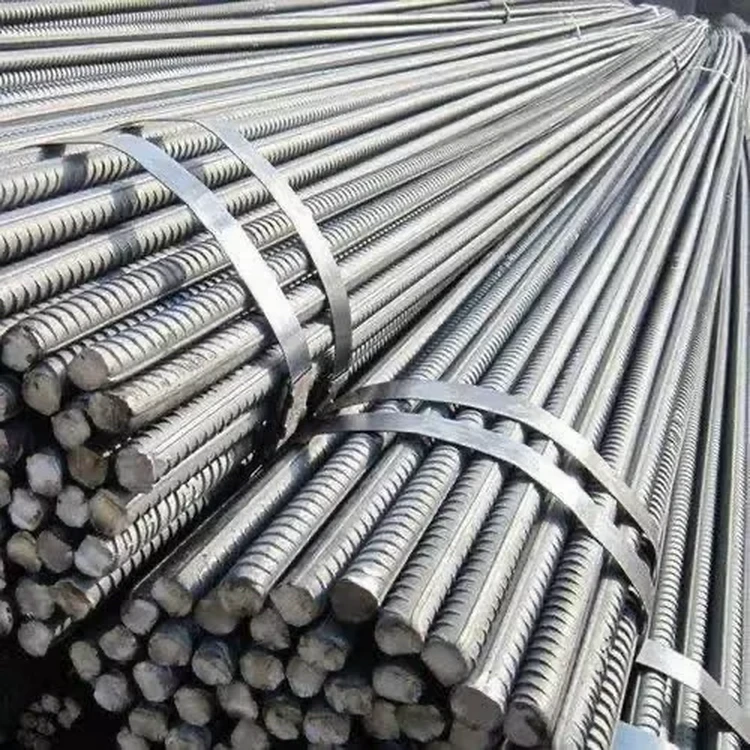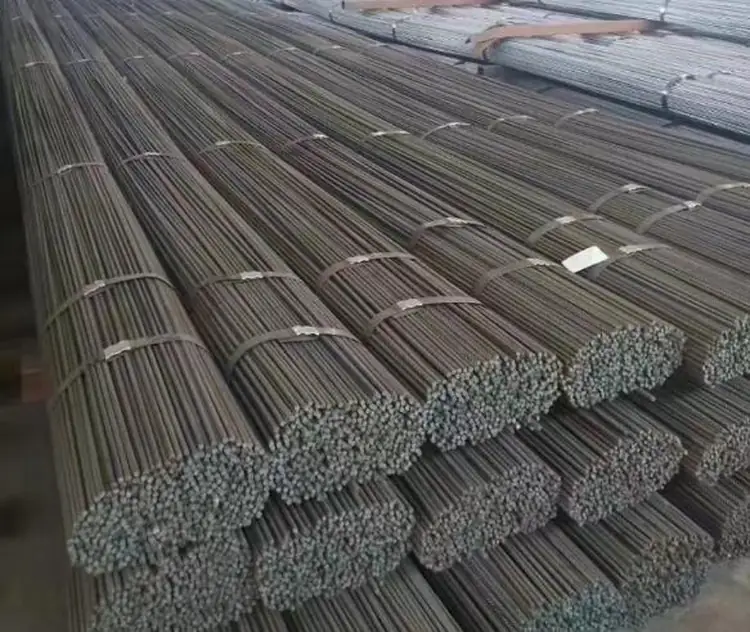Categories
Steel Rebar
ASTM A615 Reinforcement Bar Grade 8
Unlike the former two kinds, ASTM A615 is a deformed steel standard categorized under American standards. These are generally available in diameter between 9.5 mm and 43 mm, and length between 6 m and 12 m. Generally, the steel bars that fall under this standard are under deformed or plain carbon steel. The grades that fall within this standard are Grade 40, Grade 60, Grade 75, and Grade 80.
Reinforced Steel Bar refers to steel with surface protruding ribs and straight strips, which helps to strengthen the adhesion between concrete and steel bars and it helps to create strong pull between steel bars and cement. It is suitable for reinforced concrete projects that require high strength, such as houses and well contorlled in accordance with the latest version of TIS 24-2559. The quality grade (steel symbol) is SD 40 and SD 50. The nominal diameter is from 10 mm to 40 mm. The standard lengths are 10 M and 12 M and lengths is also available according to the customer's requirements.
Types of TMT Steel Bars: There are different types of grades available in TMT steel bars, where grade implies the number of stress level used to deform it. Quality is an important factor for any product and we provide you with better quality according to your requirements. These are the types of TMT steel bars available with us.
ASTM A615 Reinforcement Bar Grade 75
Unlike the former two kinds, ASTM A615 is a deformed steel standard categorized under American standards. These are generally available in diameter between 9.5 mm and 43 mm, and length between 6 m and 12 m. Generally, the steel bars that fall under this standard are under deformed or plain carbon steel. The grades that fall within this standard are Grade 40, Grade 60, Grade 75, and Grade 80.
ASTM A615 Concrete Rebar Grade 40
Manufactured from high carbon steel, both A-615 GR 60 and A-615 GR 40 rebar grades provide structural support to concrete and masonry constructions. They reinforce structures with strength and stability. With their reinforcement, they help prevent buildings and other structures from cracking, sagging, collapsing, or experiencing other unwanted and dangerous deformations. They do this by equalizing the distribution of tension and by absorbing stress.
A-615 GR 60 and A-615 GR 40 reinforce concrete slabs columns in the architectural industry. They mainly benefit medium to heavy commercial applications such as walls, roadways, driveways, parking structures, brick buildings, and skyscrapers, among others.
ASTM A615 Reinforcing Bar Grade 60
ASTM A615 Steel Rebar increases the tensile strength of concrete and can be used for both primary and secondary reinforcement. It helps absorb stress and weight and facilitates the more even distribution of the tension caused by the expansion and contraction of concrete when it is exposed to heat and cold, respectively.
ASTM A615 Steel Rebar has a rough, blue-grey finish with raised ribs throughout the bar. ASTM A615 Grade 60 Steel Rebar offers enhanced yield strength of at least 60 thousand pounds per square inch, or 420 megapascals on the metric grading scale. It also features a continuous line system, with one line running along the length of the bar which is offset a minimum of five spaces from the center. These characteristics make Grade 60 Steel Rebar particularly well-suited for medium to heavy-duty concrete reinforcement applications.
BS4449 Steel Reinforcement Rebar
BS4449 is yet another deformed steel bar standard. It is also differentiated as per European standards. When it comes to manufacturing, the steel bars falling in this standard are also hot rolled, which means that they are also used for general purposes, i.e. in common construction projects. These deformed bars are also available between 12 mm to 30 mm diameter size. And the common lengths that they are available in are 9 m and 12 m. Though, it might vary highly.
The differences between the, B and C designations are complex and related to structural tolerances. For steel mesh products, B500A grade steel is usually used, and for steel bars, B500B grade steel is used. B500C steel is rarely required, and it is always worthwhile for structural engineers to check whether B500B grade steel can be used instead of B500C, because B500C usually has a significant cost overhead.
HPB300 (Grade I) is a common steel bar with a diameter of 6-12mm. Commonly used in the production of s
HPB300/HRB335/HRB400/HRB500 Reinforcement
China's steel bar grade according to the requirements of the Chinese standard GB1499.2-2018. According to the production process, there are hot rolled steel bars (H) and cold rolled steel bars (C). Hot-rolled steel bars are divided into smooth round steel bars (HPB300) and ribbed steel bars. The common brands of hot rolled ribbed steel bars are HRB400, HRBF400, HRB400E, HRBF400E, HRB500, HRBF500, HRB500E and HRB600.
HPB300 (Grade I) is a common steel bar with a diameter of 6-12mm. Commonly used in the production of s
Epoxy resin coated steel bar is an epoxy resin protective coating prepared on the surface of ordinary steel bar by electrostatic spraying powder high temperature sintering process. The coating has excellent chemical corrosion resistance and does not react with acid and alkali. And the coating has anti-permeability, so it can delay the corrosion medium (such as water, oxygen, chloride, etc.) contact with the steel, so that its corrosion resistance life is greatly extended.




